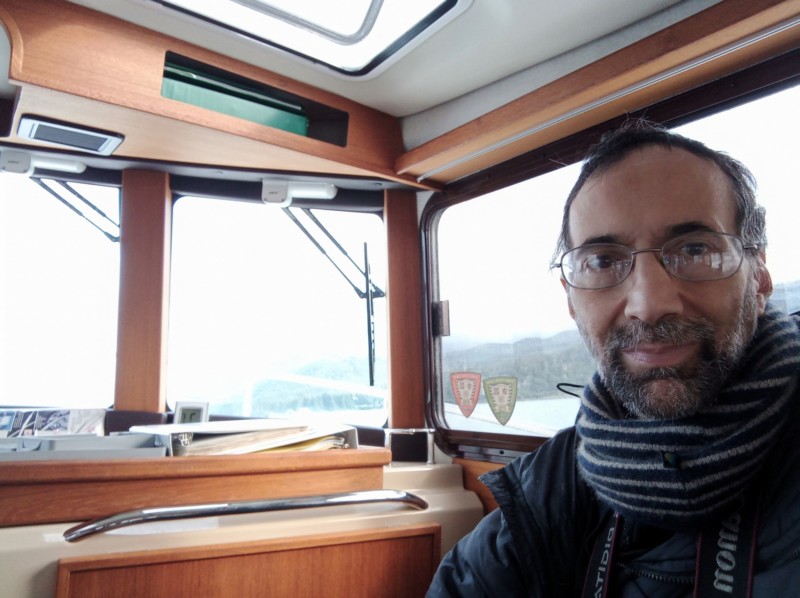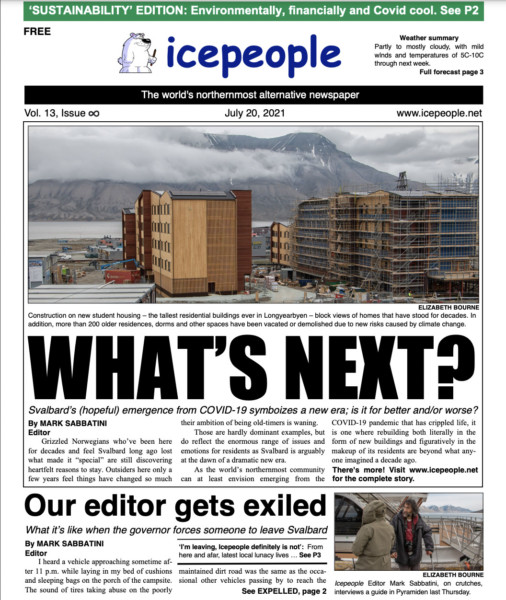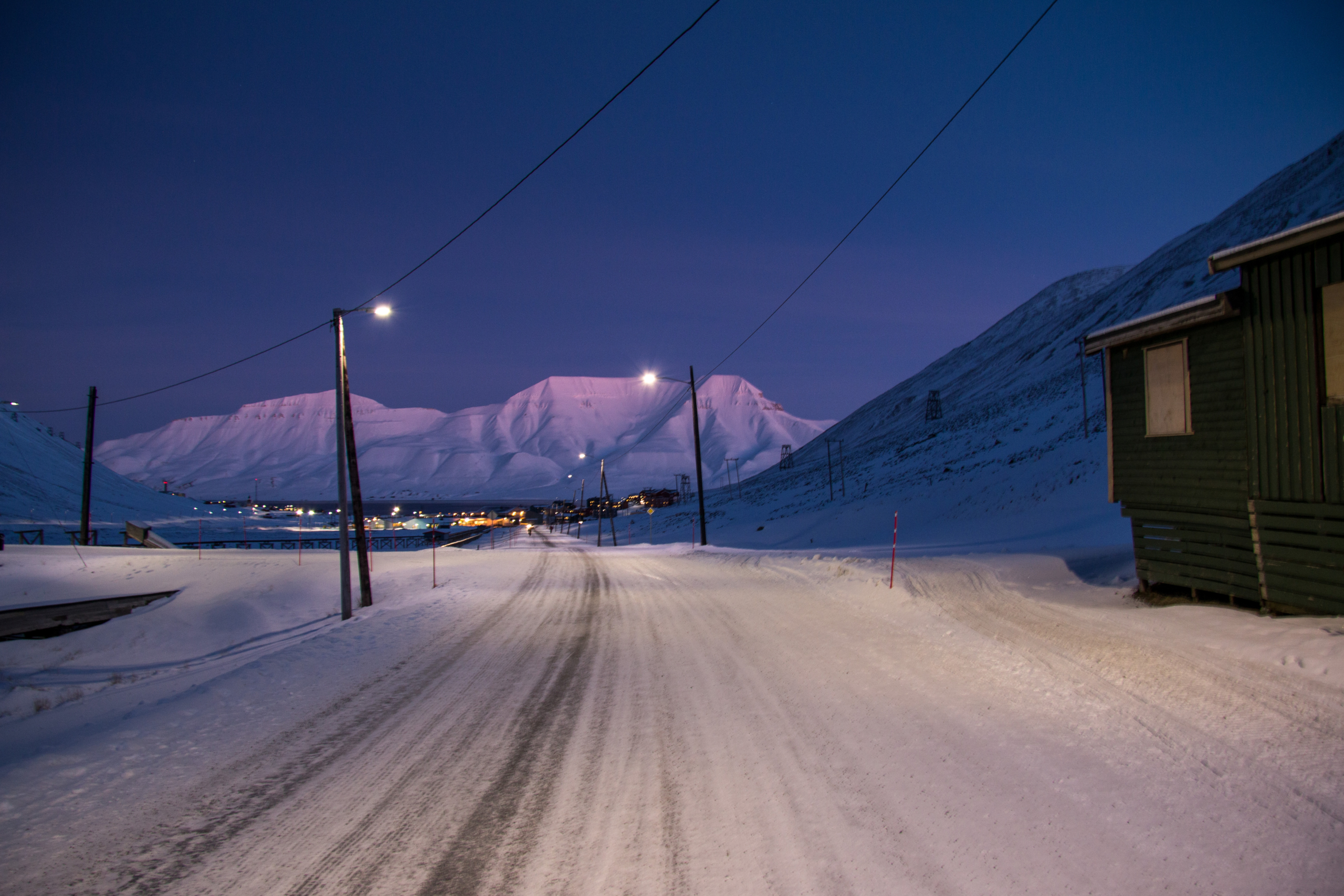Sign up for The Media Today, CJR’s daily newsletter.
For nearly thirteen years, Mark Sabbatini has served as the sole publisher, editor, and reporter of IcePeople, a paper covering Svalbard, a remote Norwegian archipelago in the High Arctic, for a global audience.
Earlier in his career, Sabbatini worked at newspapers including the Los Angeles Times and the Antarctic Sun. In 2008, he visited Svalbard to attend a jazz festival and liked it so much that he stayed. He founded IcePeople shortly after. “I had always wanted to edit my own small newspaper,” he explains. For more than a decade, Sabbatini ran the paper with the idealist mindset that alt-weeklies are supposed to be free, even as his financial circumstances worsened.
He printed the English-language newspaper every week—between sixteen and twenty pages—then paid around four dollars to photocopy each issue. He distributed copies in local shops and hotels. For income, Sabbatini relied on money from odd jobs, guided tours, donations, and an occasional grant to cover production costs, but in recent years this hasn’t been enough to make ends meet. In 2016, Sabbatini was forced to leave his apartment building because of damage due, in part, to thawing permafrost. The next home he moved into was condemned due to avalanche danger.
On July 13, the Governor of Svalbard ordered Sabbatini, an American citizen, off the island on the grounds that he no longer met Svalbard’s unique self-sufficiency requirement.
Under the 1920 Svalbard Treaty, the citizens of any one of the forty-six signatory nations can live on Svalbard without a visa. However, social services like welfare are only available to Norwegian citizens, and health care facilities are limited. A local saying goes that no one is allowed to give birth on Svalbard—pregnant women travel to the mainland shortly before their due date—and no one is allowed to die on Svalbard—people can’t be buried there due to the permafrost.
The Governor of Svalbard can expel anyone who doesn’t have the “sufficient means to stay or earn a living legally” or who is unable to take care of themselves. This regulation is rarely enforced, however, and most people who are sent home are new arrivals who can’t find work; Sabbatini, a long-term resident, is unique in this regard.

Mark Sabbatini. Photo courtesy of Sabbatini.
Sabbatini’s departure leaves a critical hole in on-the-ground coverage of the archipelago. Longyearbyen, sitting eight hundred miles from the North Pole and counting 2,400 residents, is the fastest warming town in the world. Temperatures on Svalbard have risen by roughly four degrees Celsius since 1971—five times faster than the global average. Winter temperatures are seven degrees higher than they were fifty years ago. “What I’ve seen, visibly, in terms of climate change is just so drastic it’s hard to express it all in a few words,” Sabbatini says.
On December 19, 2015, an avalanche crashed down on Longyearbyen’s eastern neighborhood, burying eleven homes and killing a man and toddler. A little over a year later, another avalanche hit two apartment buildings. Scientists found that the avalanches were caused by storms that brought short and intense bouts of snow to this part of the mountain, packing it into fragile slabs.
At the time of the first avalanche, Sabbatini was the only reporter on the ground; the staff of the Norwegian-language newspaper Svalbardposten had traveled to the mainland for the holidays. International media relied on Sabbatini for accurate, minute-by-minute updates. “The avalanche was roughly equivalent to IcePeople what the Iraq War was to CNN,” he deadpans. “It put it on the map in a huge way.” At one point, the volume of international traffic crashed the site. A government report about the avalanche response later found that Sabbatini was the only person providing emergency information to Longyearbyen’s citizens, exposing a significant deficiency in their operations.
Today, the reach of IcePeople extends far beyond the archipelago; it serves as a critical news source for anyone with an interest in Arctic affairs—stories include those on illegal poaching of bearded seals and the end of Norwegian coal mining. Despite its comic-sans title font, dated homepage, and polar bear avatar, the site receives about 50,000 unique visitors per month, with readers from as far away as South Africa. Foreign and Norwegian reporters have long relied on Sabbatini for help with climate stories from the remote region.
Thomas Nilsen, editor of The Barents Observer, a paper based in Kirkenes, Norway, describes Sabbatini as “a true long-standing hero in Arctic news reporting.”
“Journalism up north is often about small newsrooms with limited resources. That, combined with long distances and expensive travel, requires us to cooperate,” Nilsen says. His news outlet covers the Barents region, shared between Russia and northern Norway, for an international audience. It was important, he adds, that Sabbatini was there to help judge what was happening.
Since he lost his apartment in 2016, Sabbatini has struggled to survive on the archipelago. He’s had a couple of bad falls on ice, resulting in two broken hips that necessitated medical evacuations to the mainland. Earlier this year, a bike accident left him on crutches. Over the winter, he was able to stay at an empty Airbnb in the town’s industrial district, but it was rented out in June, and Sabbatini was forced to move into a tourist campsite on the edge of town—the same place where a thirty-eight-year-old Dutch man was killed by a polar bear last summer.

IcePeople’s final print edition was published in July.
Lars Fause, the newly appointed governor, began investigating Sabbatini’s circumstances shortly after he assumed office on July 1. On July 13, Sabbatini was informed he had to leave Svalbard. Though disappointed, Sabbatini says he doesn’t think the governor was unfair in his decision. (The Governor’s office declined to comment on the details of the newspaper publisher’s case, citing privacy reasons.)
Sabbatini acknowledges the risks of living on Svalbard. “If I’m on crutches and I’m out somewhere and a polar bear comes, I can’t do anything to help myself. If I fall into a glacier crevasse or get caught in an extreme storm, I’m not going to be able to seek help. It’s dangerous to be here if you’re not sufficient in all senses. The governor was concerned about my safety.” He plans to keep publishing IcePeople online from Juneau, Alaska, aided by a network of informants in Svalbard.
In some ways, the quirk of Svalbard’s unique governance is a fitting end for Sabbatini. “I always told folks that if I were to meet my end in Svalbard I would go out getting attacked and killed by a polar bear—one big banner story to tell the world. But it does make sense that I was forced out of here in this very unique Svalbard way.”
Has America ever needed a media defender more than now? Help us by joining CJR today.



